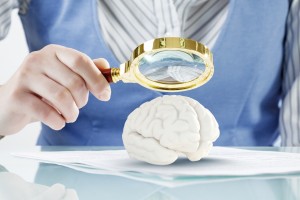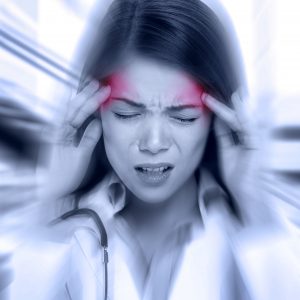
|
|
July 2016 - Issue #1 |
TCP ORGANIZATION
|
MR. BRAIN FIT
|
ONE HUNDRED WORDS
|
|
The Chiari Project (TCP) is primarily focused on creating awareness and conducting research in an effort to discover new approaches to therapeutic pain management. We are committed to having a positive impact on the lives of individuals who are suffering from this debilitating neurological condition. Since May of 2015, TCP has operated as a 501(c)(3) Non Profit Organization. We will continue to concentrate on research at the university level for Chiari Malformation (CM), Syringomyelia and related neurological conditions. Together, we can make a difference through your support and encouragement!
|
Mr. Brain Fit was born to promote healthy brain activity. Concentrating on proper exercise and nutrition is vital for the Chiari community because symptoms can alleviate with some simple lifestyle changes. Mr. Brain Fit will appear in upcoming issues with his own comic strip where he will educate, encourage and enforce his ideals. Please welcome him to The Chiari Project family. |
Created out of pure frustration due to the lack of self help information, I took it upon myself to create The Chiari Project. The task of identifying pain management solutions can be a broad mission, but after spending an enormous amount of energy over the last year, I successfully laid a foundation for the core research to impact the lives of those suffering. All Chiari cases differ, so everyone must be proactive in maintaining a healthy lifestyle from diet to exercise. Let's stay committed to this movement as I personally want to dedicate my time in helping the Chiari community. TCP Founder, Jared E Katz |
WELCOME TO OUR RESEARCH In 2016, TCP has initiated research in exercises for those dealing with CM. Also, TCP has begun to explore appropriate diets for those suffering from CM. Please refer to the sections below for more information. |
TCP QUICK FACT
Estimates for the number of people with true Chiari range as high as 500,000 in the United States. |
UNDERSTANDING CHIARI MALFORMATION Although the cause of CM is not fully understood, through genetic testing it has been found to be sometimes familial, although there are types of CM that may also be acquired. Most people have either CM1, occasionally CM2. The literature has introduced concepts of Chiari Zero and 1.5, the latter of little clinical value. The basis of the disorder stems from a small posterior fossa which is incapable of holding the entire cerebellum. When this is the case, it creates tonsillar displacement which can create an array of symptoms. |
SYMPTOMS The most common symptom of CM is Occipital headaches. Other symptoms include; neck pain, dizziness, weakness, blurred vision, paresthesia, numbness, tingling, fatigue and trouble sleeping. |
EXERCISE IMPACT IN CHIARI CASES
Forced inspiration or motivation of CSF(Cerebrospinal Fluid) is the biggest contribution of CSF movement. Forced inspiration helps to keep CSF flowing at a proper rate in everyone, but forced respiration may increase the flow to prevent CSF static conditions which may damage vessels. If forced inspiration can be achieved without drastic measures, this would be the ideal situation. Exercise is one way to help achieve forced inspiration. Some form of exercise is needed by everyone; however, CM patients need to be mindful of the type of exercises they do to help achieve forced inspiration. Walking has always been one of the most recommended forms of exercise for many reasons. It is an overall beneficial form of exercise to help get the blood circulating as well as tone muscles and is also generally a safe form of exercise for CM patients. When walking, always stay focused since balance and coordination are two of the biggest problems CM patients deal with. Well-padded tennis shoes should be worn when walking to avoid pounding to the neck and cerebellum. While we continue to explore other forms of exercise for those with CM, get walking to help jumpstart your exercise regimen. Walking for at least thirty minutes every day is recommended in order to get your heart rate up and increase forced inspiration. PHYSICAL ACTIVITIES TO ENGAGE INThe table of recommended activities to engage in for ages 8-80 is now available. This allows all ages to exercise so long as they do not exhibit any significant contraindications to exercise. Always consult with your physician before beginning any exercise program as this general information is not intended to diagnose CM or even replace your healthcare professional. TCP will educate and give suggestions about specific modalities and intensities of exercise for the different age groups with CM. Those dealing with CM will be informed on the latest news regarding exercises such as; kettlebells, rowing, weightlifting, running or cycling, gait and balance exercises and much more. TCP will continue to discover activity options for all of those individuals experiencing CM symptoms so they can achieve a healthier lifestyle.
|
DISCOVERING CM IN THE BODY
There is no way to diagnose CM without proper scanning. The two types of scans used for CM diagnostics are MRI and CT with a Cervical MRI being the best means of an accurate CM diagnosis. Without a CT or MRI, the misdiagnosis of Fibromyalgia, MS, Amyotrophic Lateral Sclerosis, Migraines or psychogenic conditions that can all cause similar symptoms, is common. CSF always flows in the human body; it is continuously produced and reabsorbed. For CM patients, the goal is to induce CSF flow and reduce blockage of the Foramen Magnum. This can be achieved by different means depending on your condition and treatment may include invasive or noninvasive treatment plans. The most aggressive form of treatment for normalizing CSF flow is surgery. The surgical procedure includes posterior fossa decompression. This procedure requires the surgeon to remove a portion of the skull to create more space for the CSF to move, and a reduction in the cerebellum using electrocauterization to decrease cerebral blockage. Noninvasive treatments help control pain and minimize symptoms and include; medications, physical therapy and exercises. RESEARCH PREPARED BY:UCLA School of Medicine, Exercise Physiology Research Laboratory: Dr. Brett A. Dolezal and Andrew Hamil CONTRIBUTING EDITORSMaria McCutchen (Editor In Chief), Jared E Katz, Ulrich Batzdorf, MD ABOUT THE EDITOR IN CHIEFMaria is a freelance writer and author of, “It’s All in Your Head,” a memoir that chronicles her journey after being diagnosed with a rare brain cyst, an Arachnoid Cyst, and later, Chiari Malformation. Maria is an active advocate for those who live with these conditions. Her goal is to help people better understand these conditions so they can live more comfortable and productive lives. SOCIAL MEDIA
|
||||||||||||||||||||||||
CONTACT INFOThe Chiari Project |
FOR CONTINUOUS RESEARCH
|